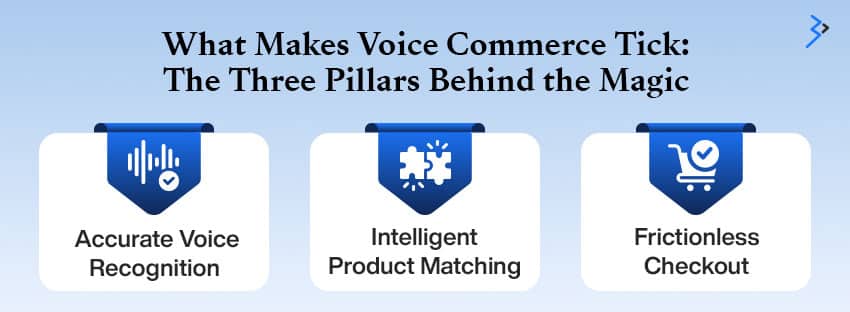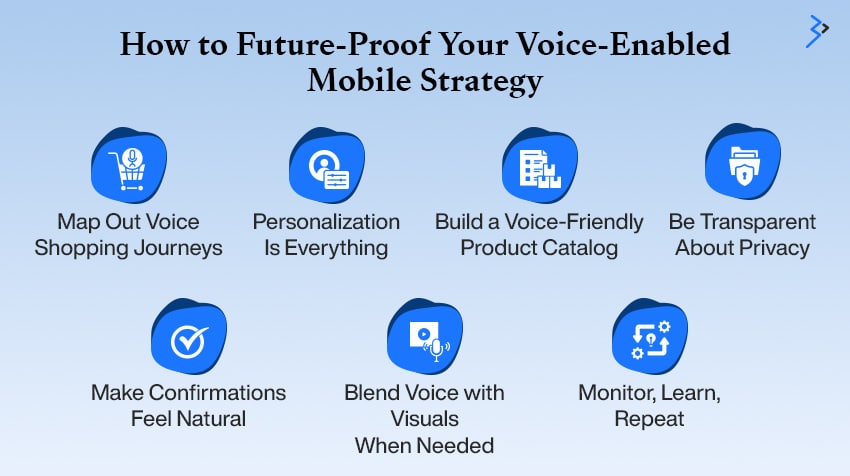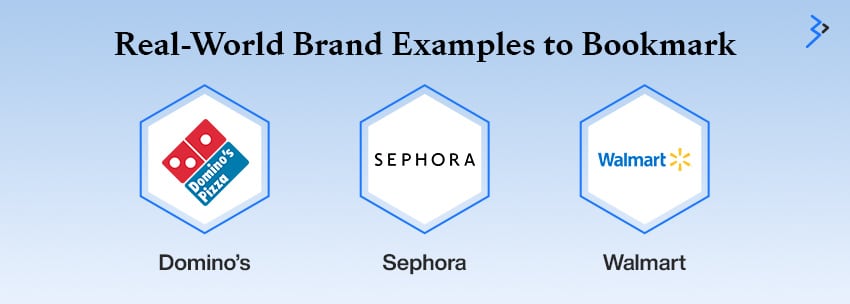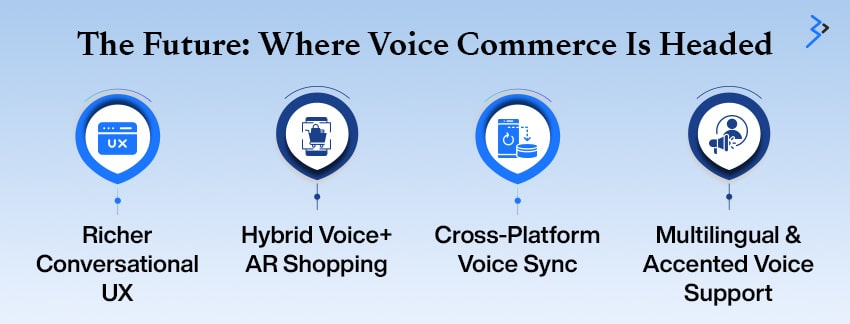Hey there, voice-shopping trailblazer—ready for a shopping revolution?
Picture this: You’re stretched out on your couch, deep into a TikTok spiral with your favorite cup of coffee in hand. Mid-scroll, it hits you—you’re almost out of coffee. But instead of interrupting your cozy vibes, you casually say, “Hey Siri, reorder my favorite coffee.” And just like that—without tapping a single button—your next caffeine fix is already on its way. That’s not the future. That’s now.
Welcome to the speak-easy shopping era, where voice assistants like Alexa, Siri, and Google Assistant do more than just answer questions—they’re placing your orders, restocking your pantry, and keeping your life running smoothly. For consumers, it’s effortless. For businesses, it’s a wake-up call. If your mobile eCommerce strategy isn’t built for voice, you’re already trailing behind.
Let’s talk about how to catch up—and why this new way to shop is reshaping everything from UX to customer loyalty.
1. What is Voice Commerce—and Why It’s Booming
Voice commerce (aka v‑commerce or voice shopping) lets users purchase products using voice commands via AI assistants like Alexa, Google Assistant, Siri, and Cortana. No tapping, scrolling, or fumbling—just speak and shop.
So, what’s driving this trend?
- Mass adoption of voice assistants: Over half of U.S. adults now use voice‑enabled devices monthly.
- Hands‑free convenience: Cooking? Driving? Juggling errands? Voice shopping is the low‑friction go‑to.
- Rapid AI advances: NLU (natural language understanding) is improving drastically—AI can now understand, confirm, and execute complex shopping requests.
It’s not sci‑fi anymore—it’s real. Brands like Walmart, Target, Sephora, and even Domino’s now support “Order via Alexa®.” People are not just browsing—they’re buying.
2. What Makes Voice Commerce Tick: The Three Pillars Behind the Magic

Voice commerce might feel like magic on the surface—just say what you want, and poof! It’s on its way. But behind that smooth experience are three essential building blocks that make it all possible. If any of these pillars are weak, the entire experience can crumble faster than a cookie in hot tea.
a) Accurate Voice Recognition
This is the bedrock. For voice commerce to actually work, devices need to understand not just what we say, but how we say it. Think accents, background noise, slang, and even casual phrases like “get me my usual shampoo.”
The tech behind voice-to-text has to be lightning fast and context-aware. It’s the difference between adding the right mascara to your cart and accidentally ordering a jar of miso paste (yes, it’s happened).
b) Intelligent Product Matching
Once the command is clear, the system needs to translate that into the right product. “Buy eggs” is easy. But “reorder my favorite low-fat almond milk” involves brand recognition, flavor preference, size, and more.
This means your platform has to store previous purchase data and organize your product catalog with detailed attributes, tags, and smart taxonomy. It’s like having a super-organized shop assistant who remembers everything you like.
c) Frictionless Checkout
You’ve said what you want. The product’s been matched. Now the final hurdle: checkout. This part should feel invisible. The system should already know your address, your preferred payment method, and offer a quick confirmation. Ideally, it’s as simple as replying “yes” to finalize—no forms, no clicks—just a smooth, hands-free wrap-up.
Get these three right, and you’re not just selling—you’re building trust, speed, and delight.
Read More – Unlocking eCommerce Potential with Shopify Magic: AI Tools That Do the Heavy Lifting

3. Good News: Consumers Want to Talk & Shop
Here’s the exciting part—people aren’t resisting voice commerce. In fact, they’re embracing it. This isn’t just about cool tech; it’s about real convenience that fits into busy, multitasking lifestyles.
Let’s look at what the numbers say:
| Voice Commerce Insight | What It Means for You |
| 20% of Millennials and 15% of Gen Xers make monthly purchases via voice | These aren’t fringe users—this is your core demographic. |
| 72% of consumers expect voice shopping to go mainstream in 3 years | Brands have a short window to get voice-ready before it’s the norm. |
| Hands-free, multitasking-friendly, faster than typing | People use voice when cooking, driving, or just too lazy to scroll—meet them there. |
Why It’s Catching On:
- Ease: No typing, no searching—just say it.
- Speed: Orders placed in seconds.
- Context-fit: Perfect for on-the-go or screen-fatigued users.
Bottom line? Consumers are ready. And if your mobile commerce experience can listen and respond, they’ll talk to you—not your competitors.
4. But Challenges Remain: It’s Still Uncharted Territory
Ambiguity in Voice
“Order paper towels” only works if the assistant knows which paper towels brand, ply count, and bundled quantity. Ambiguous commands lead to friction or abandonment.
Missing Visual Cues
Unlike scrolling online, you can’t see ratings, images, or options, so you’re asking to trust in a system to just know. That means trust in the brand and the reliability of voice AI is critical.
Returns & Exchanges
Post-purchase experiences—returns if it’s the wrong shade, incorrect size—can’t happen via voice. You’ll still need screens or human support, breaking the “hands-free” illusion.
5. How to Future-Proof Your Voice-Enabled Mobile Strategy (Without Losing Your Mind)

So, your customers are talking—and no, not just on social media marketing. They’re literally talking to their devices. “Alexa, reorder my dog food.” “Hey Google, buy that sunscreen I got last month.” The voice commerce wave is here. But how can your business ride it instead of wiping out?
Let’s break it down into real, actionable steps. No jargon. Just practical moves you can start working on today.
1. Map Out Voice Shopping Journeys
Think about the things your customers might say out loud:
- “Reorder my shampoo.”
- “Buy paper towels, the cheapest option.”
- “Subscribe and save on protein powder.”
Now, build those journeys into your platform. What happens if Alexa doesn’t catch it the first time? Have a fallback plan like: “I didn’t get that—do you want me to add your usual brand?” Simple, helpful, and human.
2. Build a Voice-Friendly Product Catalog
Your current product names might sound great in print, but if no one says them that way, you’ve got a problem. Use language your customers would naturally speak:
- Instead of “Ultra Absorbency Paper Roll 240A,” try “Charmin Ultra Soft 12-pack.”
Tag your SKUs with real-world, spoken keywords—not just technical terms. Think like a customer, not a catalog.
3. Personalization Is Everything
Voice shoppers love speed. If they say “reorder my coffee,” your platform should know which brand, size, and roast they mean.
Track preferences like:
- Regular brands
- Favorite sizes/flavors
- Reorder frequency
This helps eliminate follow-up questions and delivers those magical one-command purchases.
4. Be Transparent About Privacy
Yes, voice shopping is cool, but it also makes some people nervous. So be upfront:
- Tell users what data you store.
- Let them tweak or delete preferences easily.
- Add small visual cues—like a mic icon lighting up or a quick voice confirmation.
Privacy builds trust. Don’t just meet expectations—exceed them with clarity.
5. Make Confirmations Feel Natural
Nobody wants a robotic shopping experience. Your voice assistant should sound like a helpful friend:
“Found your 1-lb Organic Brazilian Coffee—want to buy it again?”
“Yes.”
“Great! It’s $14.99 and will arrive tomorrow.”
Simple. Friendly. Efficient. That’s what customers love.
6. Blend Voice with Visuals When Needed
Sometimes, voice just isn’t enough—like when a shopper says, “I want red lipstick,” and you’ve got 12 shades of red.
Solution? Kick it to a screen:
“I’ve found 3 top matches—check your app to choose.”
That’s called multi-modal design, and it keeps the experience flowing without frustration.
7. Monitor, Learn, Repeat
Don’t set it and forget it. Voice commerce is evolving—so should you.
- Track where people drop off (“Add to cart” but no purchase?)
- Note confusing phrases or mismatched results
- Improve your voice recognition and NLP (natural language processing) regularly
Use these insights to tweak, train, and fine-tune your voice strategy over time.
Your customers are ready to speak. If your mobile platform is ready to listen, you’re not just selling—you’re building loyalty, convenience, and a little bit of everyday magic.
6. Real-World Brand Examples to Bookmark

Let’s be real—talk is cheap unless it drives results. Luckily, some big-name brands are already crushing it in the voice commerce game. These aren’t just fun gimmicks; they’re smart, scalable strategies that make shopping easier, faster, and—dare we say—kind of fun.
Domino’s – “AnyWare” Voice Ordering
- You can order pizza using Alexa, Slack, smartwatches—even by tweeting a pizza emoji.
- It remembers your usual order, delivery address, and payment info.
- The entire experience feels seamless and just… works. Who knew saying “Pizza, please” could feel so satisfying?
Sephora – Reorder with Style
- Say, “Hey Google, reorder my BareMinerals foundation.” Boom—your last order pops up.
- If it’s out of stock, it suggests a close match and asks for approval.
- That’s voice UX done right: smart defaults, helpful alternatives, and no awkward dead ends.
Walmart – Everyday Essentials, Hands-Free
- “Alexa, order eggs” taps into your past Walmart+ purchases to predict the exact product.
- Offers a friendly confirmation before finalizing.
- Walmart even created custom Alexa “Skills” to expand what users can do—think of it as voice superpowers.
Here are a few real-world examples worth taking notes on:
Each of these brands understands one thing: people want speed, ease, and personalization. And they’re delivering it—without requiring a screen. If you’re building or improving your voice commerce strategy, these are the benchmarks to beat.
7. The Underlying Tech That Powers Voice Commerce

Voice commerce may feel effortless—just say the word and your item’s on the way—but behind the scenes, a well-oiled tech machine is working overtime. Let’s take a peek under the hood to understand what really makes this magic happen.
- Automatic Speech Recognition (ASR): Converts your spoken words into text. Sounds simple, but accuracy depends heavily on accent clarity, background noise, and the naturalness of people’s speech. Ever said “buy eggs” and it heard “buy bags”? That’s ASR under stress.
- Natural Language Understanding (NLU): Once your words are transcribed, NLU deciphers what you actually meant. Did “Buy Tide” mean detergent or concert tickets? This tech finds the intent and key product details.
- Dialog Manager: Keeps the conversation going. It knows when to ask for clarification or when to move forward smoothly.
Example: “Do you want the 24-pack or 48-pack?”
- Commerce Layer: This connects voice inputs to your catalog, inventory, SKUs, and prices. Without this, “Add shampoo” could turn into a product mystery.
- Fulfillment & Payment: Once confirmed, it securely processes payments and triggers real-time shipping logistics.
- Confirmation & Feedback: Sends a clear voice or visual update like: “Your order has been placed and will arrive tomorrow.”
When these systems work in sync, your brand provides a seamless, voice-enabled buying experience. But a single glitch—unclear pricing, a payment fail, or a vague response—can undo all that trust. Get the tech right, and voice becomes your competitive superpower.
8. From Mobile eCommerce to Voice Commerce: Bridging the Gap
As of 2024, nearly 50% of mobile app traffic involves voice input. People are casually saying things like “show me red sneakers” or “find socks under $10.” That means your mobile app development services are already halfway to being voice-ready—the next leap is enabling native in-app voice purchasing.
Here’s how to close the gap:
Add a voice search mic right in your app. Use speech-to-text (like wav2text) to convert spoken queries into product searches.
Enable voice commands for product actions:
- “Siri, add this to my cart.”
- “Buy size medium in red.”
Recognize user-specific commands with personalization:
- “Reorder from my wishlist.”
- “Send my monthly subscription.”
- “Repeat my last order.”
Use smart confirmations like push notifications or quick visual pop-ups to confirm voice-triggered purchases.
This hybrid approach delivers the convenience of voice with the confidence of visual cues—perfect for users who like to talk and tap.
9. Pitfall Prevention: Voice Faux Pas to Dodge
Voice commerce can feel magical—until it isn’t. A few small missteps can turn delight into frustration. Here’s what to avoid if you want your voice experience to win hearts (and sales):
Misheard Commands
- Accents, slang, or brand names can be tricky.
- “Buy Nikes” turning into “buy nice”? Yeah, that’s a problem.
- Train your voice system for varied speech patterns and run frequent testing.
Poor Error Handling
- A flat “I don’t have that” kills the experience.
- Always offer helpful follow-ups like, “Would you like something similar?”
Surprise Charges = Lost Trust
- Never skip price details.
- Voice out the full cost—product, shipping, tax—before checkout.
No Off-Ramp? Not Cool.
- Some users may want to switch to an app or a website mid-purchase.
- Always offer a clear path to “exit voice” and continue elsewhere.
Avoid these pitfalls, and your voice commerce journey won’t just work—it’ll wow.
Read More – More Than Just Suggestions: How AI Is Deepening Customer Connections in eCommerce
10. The Future: Where Voice Commerce Is Headed

Voice commerce is just getting started. What began with simple reorders is evolving into rich, intelligent shopping experiences. Here’s a glimpse at the innovations shaping the future—from AR-powered try-ons to seamless cross-platform voice syncing and truly inclusive, multilingual support.
Richer Conversational UX
From simple re-orders to smart split-orders, voice assistants will guide you (e.g., “Your laundry pods are low—subscribe and save?”).
Hybrid Voice+AR Shopping
Picture voice-led browsing while your phone screens AR overlays: “Show me that dress in green” → AR dresses up a virtual mannequin in your camera view.
Cross-Platform Voice Sync
Amazon, Google, and Apple ecosystems will compete—your shopping preferences, history, and subscriptions sync across devices and channels.
Multilingual & Accented Voice Support
Regional brands (e.g., in India) will offer voice commerce in Hindi, Tamil, Bengali—capturing huge new audiences.
11. What Should You Do Now?
If you’ve already invested in mobile ecommerce, voice commerce is your natural next step. It’s not about reinventing everything—it’s about making shopping easier for your customers.
Here’s how to start:
- Choose 10–20 popular, reorderable products (think coffee, detergent, makeup).
- Build a simple voice storefront using Alexa or Google Assistant.
- Invite your loyal customers to try it out: “Reorder via voice and tell us how it felt.”
- Track the results—conversion rates, where users drop off, common errors.
- Improve and repeat based on real feedback and voice command behavior.
Pro tip: Ask for quick user reviews to use as micro-content. One shopper said,
“I didn’t expect it to ‘get me’ right away—it was honestly faster than picking out a mug by hand.”
That’s the power of voice: speed, ease, and surprise delight. Why not give it a try?
12. Quick Reference Checklist
Here’s your voice commerce readiness cheat sheet:
| Area | Key Actions |
| Voice Catalog Readiness | Use keywords, brand names, and size variants |
| Personalization | Save users’ default preferences and past orders |
| UX Flow | Enable smart confirmations and fallback flows |
| Privacy & Trust | Provide clear voice logs and transparent data policies |
| Analytics & Iteration | Track errors, refine NLU rules, and command handling |
| Mobile UX Integration | Add voice-search mic and hybrid screen interface |
13. Final Words: Embrace the Voice‑First Wave
Voice commerce isn’t just another sales channel—it’s a paradigm shift. It’s transforming how we buy rather than what we buy. If there was ever a time to explore, experiment, and lead—this is it.
Whether you’re baking brownies late at night or need to re-order socks while driving, voice commerce gives people back time—their biggest currency.
Let voice commerce be more than a buzzword for your brand. Let it be your edge.Need help launching a voice shopping pilot? Curious how your app could support “Hey Google, buy refills”? Connect with us—we’ve spent years crafting voice storefronts, and we are happy to share templates, tricky pitfalls, and optimization tactics.
FAQs
Voice commerce is when customers use voice commands—through assistants like Alexa, Siri, or Google Assistant—to search, shop, and buy products online. It’s shopping without tapping, just talking.
Absolutely! From reordering basics to checking deals, millions already use voice daily. In fact, 20% of Millennials make monthly voice-based purchases, and that number is growing fast.
Not at all. Even small businesses can start with a simple voice-enabled mobile app or create a basic Alexa/Google Assistant Skill to test the waters with loyal customers.
Voice shopping is hands-free and conversational. Instead of browsing menus, users say things like, “Reorder my favorite shampoo.” It’s faster and great for multitasking.
Start with voice search integration, build a voice-friendly product catalog, and ensure your system can handle commands like “buy,” “reorder,” and “subscribe.” Also, don’t forget clear confirmations!
Good design helps here. Include fallback options, clarifying questions, and offer a quick switch to screen-based interaction so users always stay in control.
Related Articles
-
The Best eCommerce Security Tips And Practices In 2023
The security of their user’s data has to be the most crucial aspect of running the business for an eCommerce business owner. Besides, why not? Attack patterns over the past
-
How Big Is Amazon? Your Guide to Understanding Amazon Business Model
Amazon, one of the most highly used eCommerce company is continuously growing, all thanks to more and more consumers who are now choosing to turn toward the internet for purchasing
-
E-commerce website optimization strategies: The three step Game plan
Do you own an e-commerce store? Do you want to expand it? Are you looking for ways to optimize it? Do you want to increase the conversion rate and revenue




